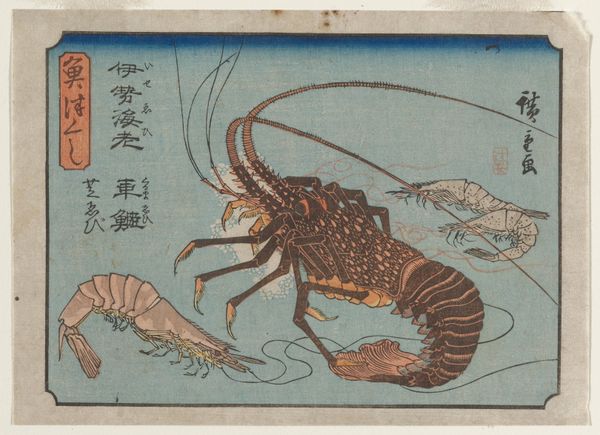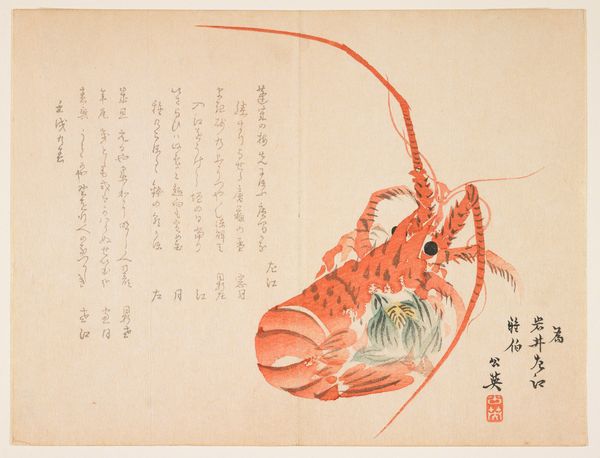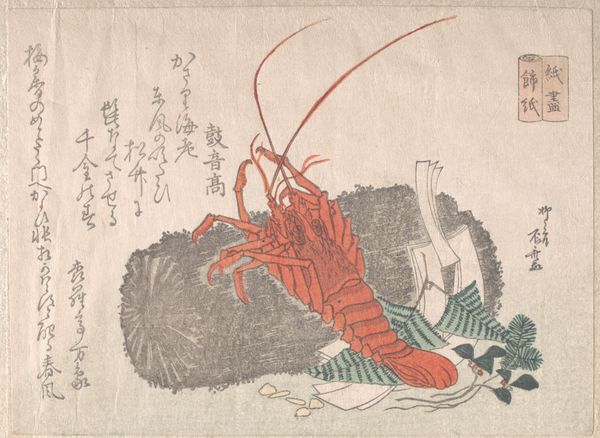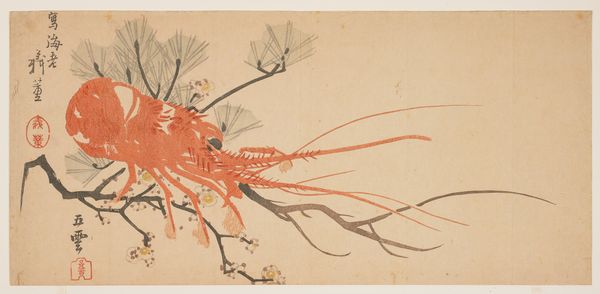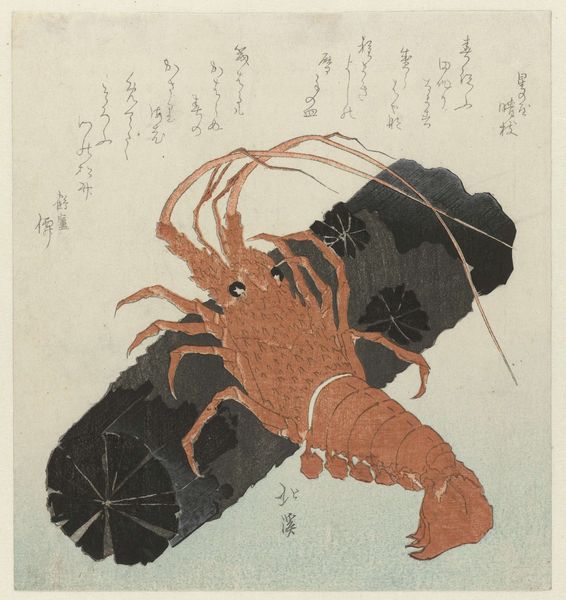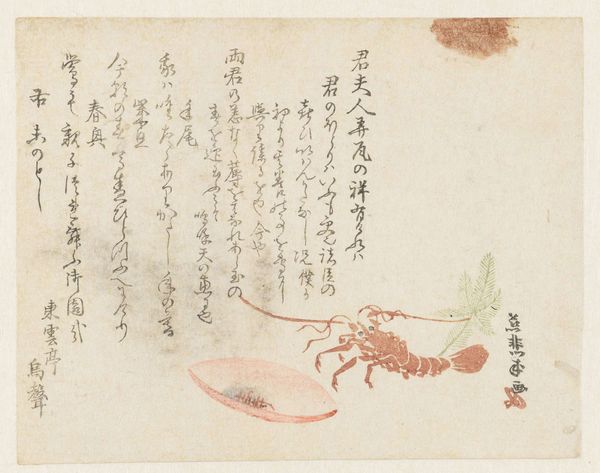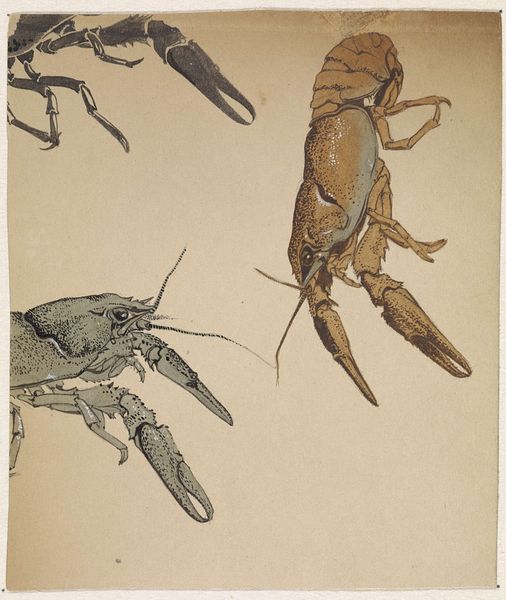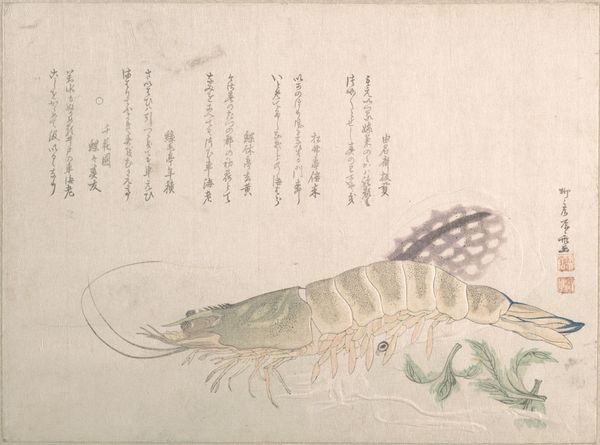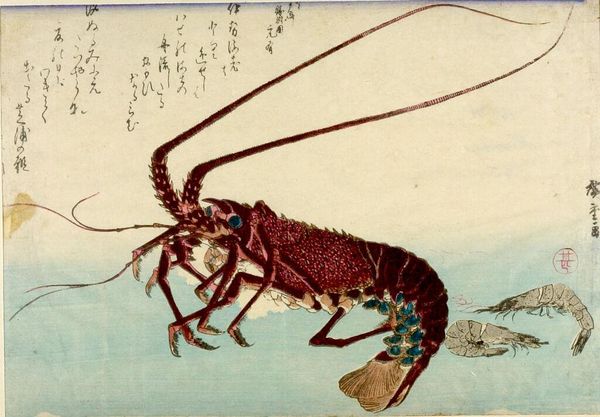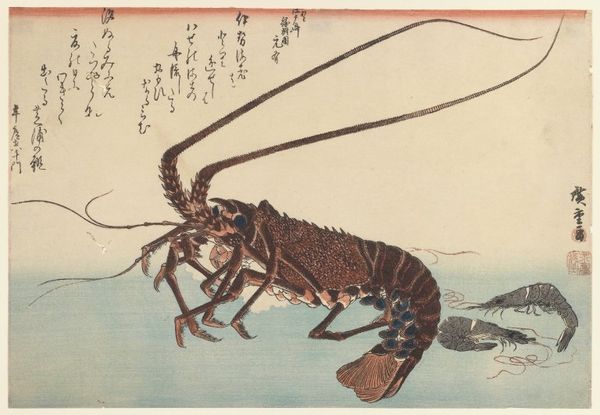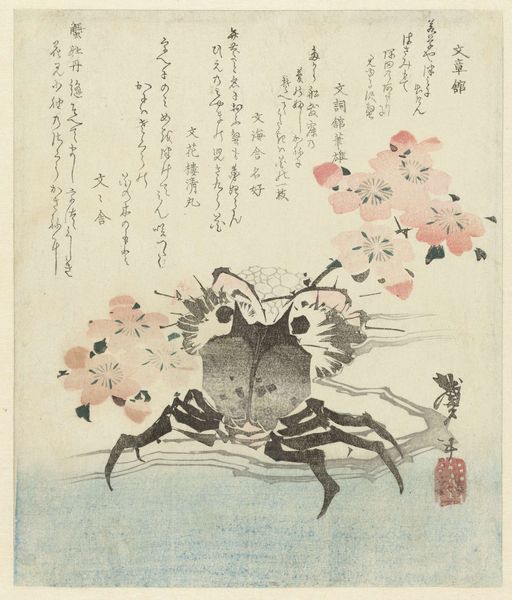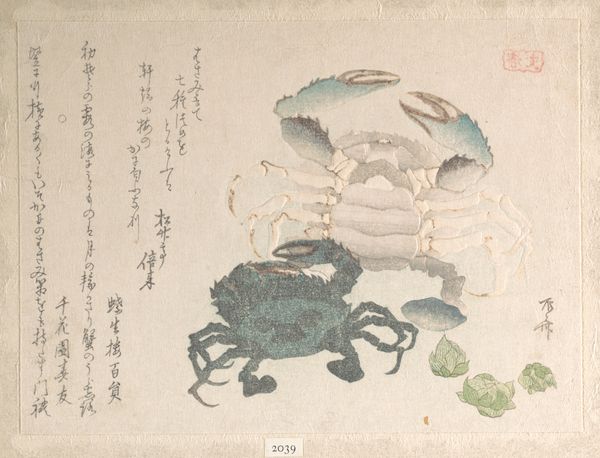
drawing, watercolor, ink
#
drawing
#
water colours
#
impressionism
#
asian-art
#
watercolor
#
ink
#
coloured pencil
#
realism
Dimensions: 14 1/4 x 10 7/8 in. (36.2 x 27.6 cm)
Copyright: Public Domain
Curator: Immediately, I’m struck by the stark realism tempered by the dreamlike wash of the watercolor. It's unsettling and intriguing. Editor: You've perfectly captured my first impression. We are looking at "Crayfish," a drawing likely created between 1877 and 1897 by Watanabe Seitei, a notable figure in Japanese art of the late 19th century. Seitei expertly employs ink and watercolor to depict the crustacean. Curator: The technical skill is undeniable. Notice how Seitei renders the textures, the chitinous shell, the delicate legs. It's almost scientific in its precision, yet rendered with a fluidity that feels quintessentially Japanese. The large Crayfish dominates the page in contrast to the diminutive crustacean beneath. The interplay of scale directs the gaze towards the featured focal point of this drawing. Editor: Absolutely. I’m interested in thinking about this piece within a broader social and cultural context. Japan, during the late 19th century, was undergoing rapid modernization, opening up to Western influences. The presence of a drawing like this—rooted in traditional techniques yet depicting a subject with almost scientific accuracy—speaks to a nation grappling with its identity. Who or what is Seitei really capturing? And whose stories remain unwritten? Curator: Fascinating question. From my perspective, the allure lies in the delicate balance of contrasts. The sharp, precise lines alongside the soft, blurred washes; the juxtaposition of Western realism with Eastern artistic traditions. And how does its size inform one's viewing experience? What is the impact of the intimate scale of the work in conveying its message or narrative? Editor: Scale is important! Perhaps it encourages a sense of intimacy and scrutiny but I read a discomfort. The isolated presentation of the subject—removed from its natural habitat—feels jarring. How do Japanese ideas around consumption impact your response to the subject of this artwork? Is the artist highlighting natural wonders, or underlining its value in trade and market? Curator: I suppose I'm most drawn to the artist's evident technical virtuosity. I can see what you're getting at, though, considering these historical circumstances makes us appreciate what the artist omits and includes. Editor: It's been insightful to delve into both the art object itself and how it engages with the socio-political currents. It gives us another layer of appreciating Watanabe Seitei’s intention.
Comments
No comments
Be the first to comment and join the conversation on the ultimate creative platform.
